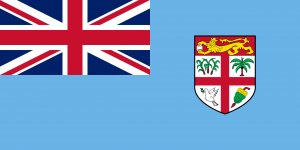Language/Fijian/Culture/Traditional-Dance
Fijian traditional dance, also known as 'meke', is an essential part of Fijian culture and celebrations. In this lesson, you will learn about the history and styles of traditional Fijian dance, how it is used to convey emotions and tell stories, and its role in Fijian cultural identity.
History
Traditional Fijian dance has its roots in ancient Polynesian and Melanesian cultures. In the pre-colonial era, dance was used to convey different messages, including negotiations between tribes, rituals, and celebrations. It was an essential part of the social life of Fijians and was passed down from one generation to the next.
With the arrival of European colonizers in the 19th century, Fijian dance was suppressed due to religious beliefs and the colonial agenda. However, the dance re-emerged in the early 20th century as part of the push for Fijian cultural resurgence and identity. Since then, traditional Fijian dance has undergone many changes, with new styles and choreography developed over the years.
Styles
There are many different styles of traditional Fijian dance, each with its unique movements, costumes, and cultural significance. Here are some of the most popular styles:
Meke
The 'meke' is perhaps the most famous style of traditional Fijian dance. It is a group dance performed to the rhythm of the 'lali' drum, with singers chanting in Fijian. The dancers move in unison, with coordinated steps, hand movements, and facial expressions, telling stories of love, war, and daily life. The meke is performed on special occasions, such as weddings, funerals, and formal ceremonies, and is an essential part of Fijian cultural heritage.
Bole
The 'bole' is another popular style of Fijian dance, distinguished by its slow and graceful movements. It is also a group dance, with dancers wearing grass skirts and garlands of flowers on their necks. Bole is often performed for tourists, but it also has cultural significance in Fijian ceremonies and celebrations.
Seasea
'Seasea' is a solo dance style that originated from the island of Kadavu. It involves the dancer wearing a fringed costume with shells, lunging and swaying to the sound of the drum, and making hand gestures. The dancer tells stories of life on the island, its natural beauty, and its traditions.
War Dance
The 'war dance' or 'cibi' is a male-only dance that was traditionally performed before heading to battle. It involves chanting, stomping, and aggressive posturing. The dance is still performed today, but more commonly as an introduction to a rugby match. The national rugby team of Fiji often performs a version of the cibi before their matches, known as the 'Fijian war dance.'
Role of Dance in Fijian Culture
Dance is an essential element of Fijian culture and identity. It is used to celebrate life's milestones, such as births, weddings, and funerals. It also serves as a way for Fijians to express emotions, convey stories, and connect with their cultural heritage.
For many Fijians, dance is a spiritual practice that connects them with their ancestors and their natural surroundings. Through dance, they communicate with the spirits, honor their traditions, and maintain their cultural identity.
Conclusion
Traditional Fijian dance tells stories of love, war, celebrations, and everyday life. It is an essential part of Fijian culture, connecting Fijians to their heritage and spirituality. With its unique styles, movements, and costumes, traditional Fijian dance continues to represent the beauty and diversity of Fijian cultural identity.
| Fijian | Pronunciation | English Translation |
|---|---|---|
| Meke | meh-keh | Popular style of Fijian dance performed to the rhythm of the 'lali' drum |
| Bole | boh-leh | Popular style of Fijian dance distinguished by its slow and graceful movements |
| Seasea | say-ah-say-ah | Solo dance style from the island of Kadavu that involves the use of hand gestures |
| Cibi | thee-bee | Male-only dance traditionally performed before heading to battle or before rugby matches |
- Traditional Fijian dance is an essential part of Fijian culture, connecting Fijians to their heritage and spirituality.
- Meke, bole, seasea, and cibi are some of the most popular styles of traditional Fijian dance, each with unique movements, costumes, and cultural significance.
- Dance is used to celebrate life's milestones, express emotions, and connect with the spirits.

